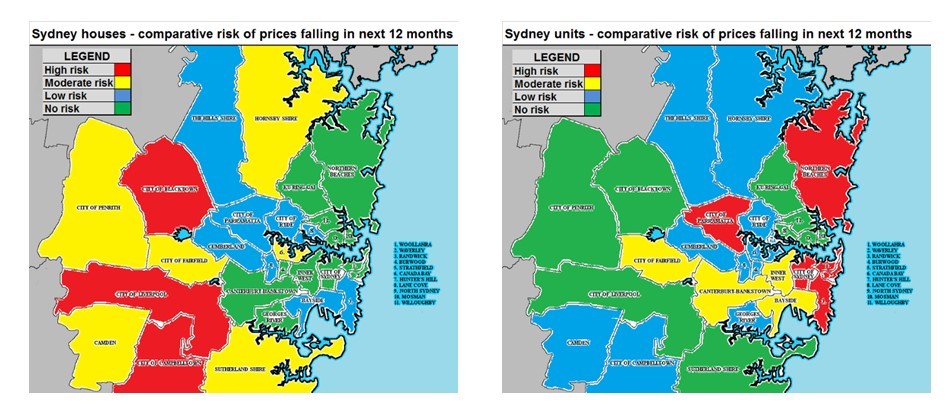What's wrong with predictions
Whenever the unexpected happens, it seems that everyone is keen to predict possible outcomes for our property markets. John Lindeman reveals which forecasts are useful and which to ignore.
As we strive to unravel ourselves from the COVID-19 crisis and the uncertainty it has caused, property market predictions keep coming, ranging from dire warnings of imminent collapse to assurances that the next boom is on its way.
Such property forecasts may be exciting, interesting, or even scary, but they are seldom of any real value to investors, and that’s not just because they often turn out to be wrong!
Predictions often combine different types of property together
Many predictions make sweeping generalisations by lumping together different types of properties as if they always perform the same way, but the potential performance of different types of housing in the same suburb often varies, because they appeal to the many different types of buyers and renters.
For example, units and apartment markets respond to changes in renter demand, as from sixty to eighty per cent of them are investor owned. On the other hand, eighty per cent of houses and townhouses are purchased as homes, so their markets respond to changes in first buyer, upgrader and downsizer buyer demand.
Units and houses can perform very differently, as these two heat maps show:

These heat maps (produced by our patented Housing Market Prediction Solution) forecast the comparative risk of price falls occurring in Sydney council locations for houses and units over the next twelve months.
They reveal that Sydney’s coastal unit markets are at high risk of price falls, while houses in the same locations tend to be at low risk of decreasing prices. At the same time, the outer western suburbs of Sydney have a high risk of house price falls, while unit markets in the same areas are at low risk.
This tells us that Sydney units are likely to perform very differently from Sydney houses in the same areas over the next year. Yet, much of the media provides “property price” predictions, “housing market” forecasts, “home value” indexes or “real estate market” estimates which lump all the houses, townhouses, villas and units together. They show the average performance of them all combined, which is of little practical use and could even be misleading.
Many predictions are for huge markets such as capital cities
Another issue with many property market predictions is that they combine all the suburbs in one city or State together to make a catch all forecast such as “Perth’s housing market expected to crash” or “Brisbane property prices set to boom”, such as this recent example:

We can’t really use these predictions, even if they turn out to be right, because we only buy one property in a suburb, not an entire city. Suburbs in any city are very likely to perform differently from each other and some may boom even as others bust.
For example, if you look again at the two heat maps above, you will notice that there are roughly the same number of areas at high risk as there are those with no risk at all, so by averaging all the areas, we would end up with a moderate risk or low risk prediction for all of Sydney. This may be still be interesting, but is of no practical use to property buyers at all.
Some property market predictions are not meant to be reliable
For any prediction to be of possible value, you need to be able to trust the person making it.

This is because many so-called experts have a vested interest in the outcome of their predictions which has nothing to do with the accuracy of their forecast.
They will talk up a market purely to encourage you to buy a property from which they will obtain a finder’s fee, commission, kick back, knock on or other financial reward.
We often hear and see such predictions made by project marketers and sellers’ agents who may promote a property market purely because it is in their interests to motivate us to purchase. That’s why property market predictions need to be as accurate as possible, because they could lead us into making decisions involving huge amounts of money and many years of financial commitment.
Make sure that any forecasts you intend to rely on are provided by recognised analysts and experts who have a proven published record of past success. Ensure that they are not based on hidden agendas, gut feel or intuition, but on proven statistical methodologies which have delivered a consistently high rate of accuracy
There’s no “one size fits all” for property market predictions

As you can see from this image, property investment offers us many different strategies to choose from depending on our finances, skills, time and most of all, what results we want to obtain.
We need strong cash flow if we want to obtain income from rent, or seek high imminent growth during our hold period for flipping or cosmetic renovations. We want medium term growth during structural renovations or developments and look for long-term growth with our buy and hold purchases.
In short, there’s no “one size fits all” when it comes to property predictions, especially in these uncertain times.
A high cash flow forecast is of no use in a suburb where we plan to do a buy-reno-sell strategy because we won’t be renting the property out, while a prediction of high market driven growth during our hold period would be very welcome.
In summary, the only predictions that you can benefit from will be produced with accurate methodologies delivered by reputable analysts. They should identify those suburbs that have the best potential to deliver success for your own preferred investment strategies and they should be relevant to our current economic situation.